Piraeus is the largest port in Greece and one of the largest and busiest passenger ports in Europe. It has been of great naval importance for Athens and Attica in general since the antiquity. Now, several projects are aiming to restore it as a cultural and recreational destination.
Historical importance
The port has been of major importance since the antiquity. That is where Themistocles departed from with the renowned Athenian fleet to face the Persian invaders at the Battle of Salamis in 480 BC. In the ancient times, three ports were located there. During the 5th century BC, the strategically important site was connected to Athens by a road protected by high walls on both sides, hence called the “Long Walls”. Built in several phases, they measured about 6 km in length, and parts of their foundations are still visible today.
When Strabo (1st century AD), a Greek geographer and historian from Asia Minor, visited Athens, he saw wetlands around the area of Piraeus, which made him think that it must once have been an island. Contemporary research distinguishes four main phases in the landscape development of the Piraeus region. The last main phase is the best documented. It began around 500 BC, when there was still a lagoon between Athens and Piraeus. At the time the Parthenon was built on the Acropolis, the builders also had to fill in and drain the lowlands in order to be able to build the “Long Walls”, which contributed significantly to the protection of the entire region.
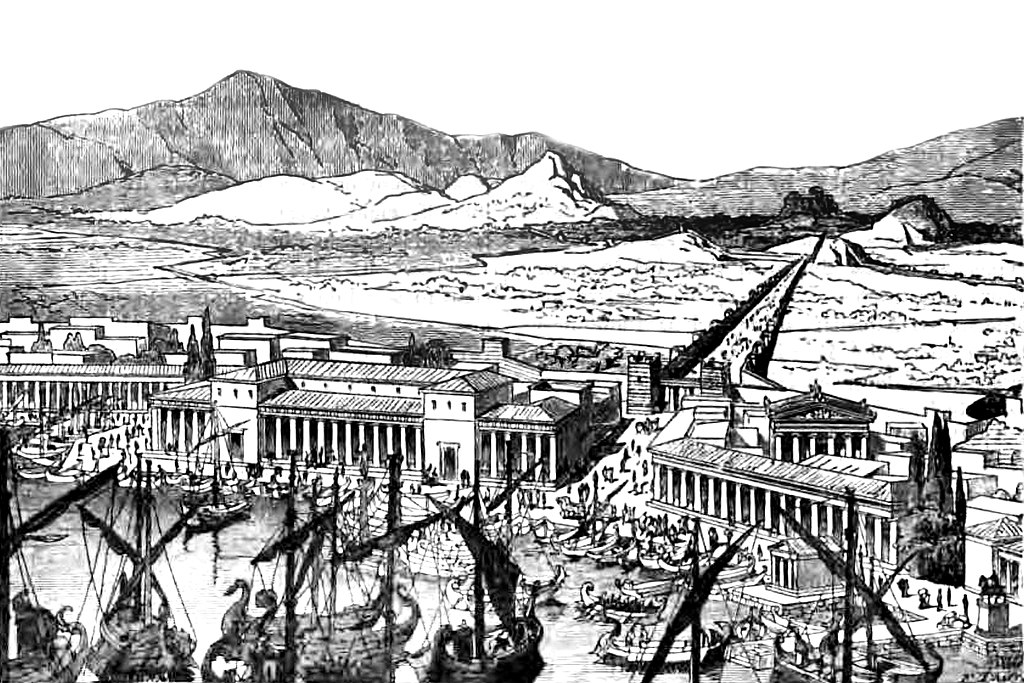 Piraeus and the Long Walls of Athens by John Steeple Davis (1900)
Piraeus and the Long Walls of Athens by John Steeple Davis (1900)
Modern day – Urban upgrade projects
Today, the city of Piraeus is bustling with activity. It is among the busiest passenger ports, but also container ports, in Europe. However, despite it being one of the most important cities in Greece, there are several parts of it that still carry the signs of its recent past as a rapidly urbanised and industrialised area, with many of the problems that this entails. However, several urban renovation projects are underway, with some already reaching their completion and others still being planned, aiming to dramatically improve Piraeus’s urban landscape and promote it as not just an economic centre, but also as a cultural and recreational destination for the people of Attica.
First in line is the improvement of the area’s transport network, which will make it easier for thousands of citizens to reach Piraeus. The extension of the metro line 3, which will provide an easier direct connection from the centre of Piraeus to the centre of Athens, is now in the final construction phase, with a 7.6 km tunnel and six new stations. Most importantly, this line with thus directly link the Athens airport with Greece’s largest passenger important port, making it simpler for international travelers to reach the point of departure for many Aegean islands and other seaside destinations. The last three of the stations are expected to be open to the public by summer.
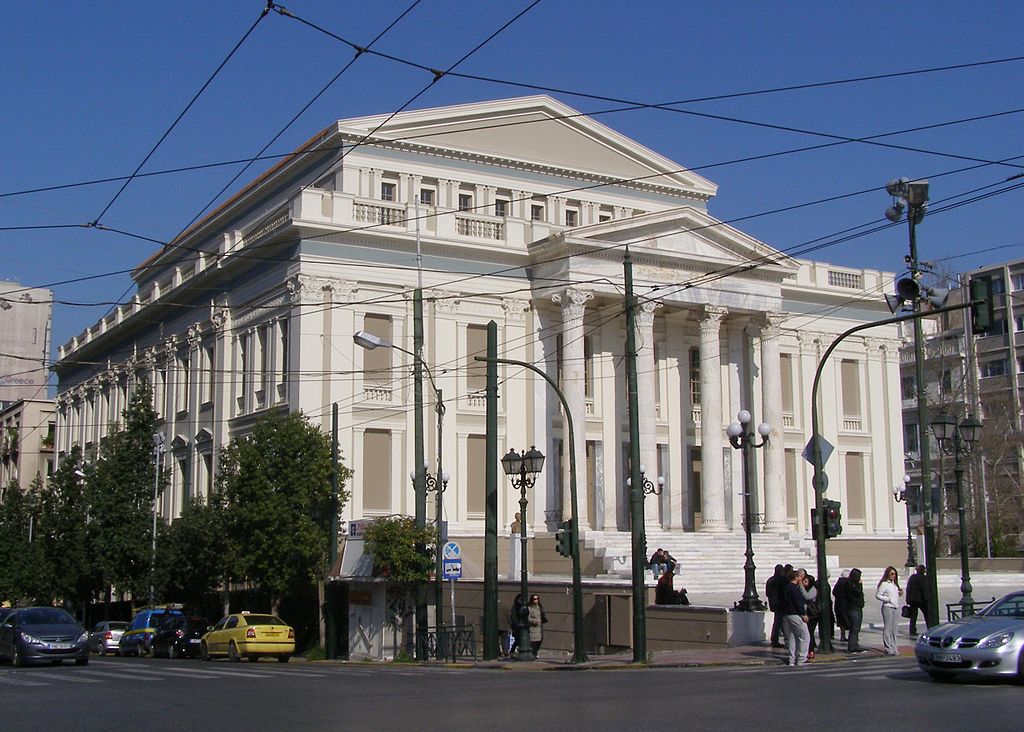 The Municipal Theatre of Piraeus (by Andrzej Otrębski via Wikimedia Commons)
The Municipal Theatre of Piraeus (by Andrzej Otrębski via Wikimedia Commons)
This project is of great importance not only for the Athens Urban Area but also for the entire region of Attica. It is estimated that there will be a large increase in total passenger traffic on the metro network, which is expected to drastically reduce the use of private cars and, by extension, carbon dioxide emissions as well as traffic congestion. The total travel time from the Athens airport to the port of Piraeus by metro is expected to be 50 minutes.
Moreover, the “Dimotiko Theatro (Municipal Theatre)” metro station –the terminal which is situated at the very heart of Piraeus city, below its central square and next to the city’s iconic theatre– is designed as one of the largest and most impressive stations of the metro line. Several important archaeological exhibits are planned to be displayed there, as is already the case for the stations of Syntagma and Monastiraki. Among them is a typical house of ancient Piraeus, uncovered during the construction works, which will be displayed under a glass surface, as well as ruins from the ancient city’s water supply system. A light installation will also bring to life the urban fabric of ancient and contemporary Piraeus.
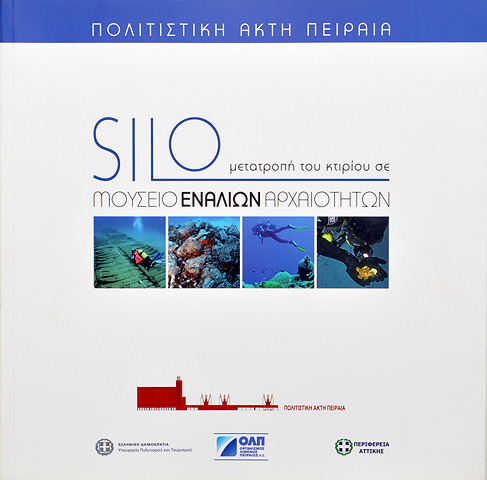 Another ambitious project is the transformation of the SILO industrial building into a pioneering Museum of Underwater Antiquities. The SILO was built on the port between 1934 and 1936 and used to house a grain storage facility; it is now an urban landmark for the city of Piraeus, but has been abandoned for decades. The Ministry of Culture and Sports has announced that the Museum Council unanimously approved the preliminary studies for the transformation of the site into a museum. The museum will not only showcase important finds from Greece’s underwater archaeological sites, but also highlight the country’s naval tradition and its rich marine life. Its facilities will cover a total area of over 13,000 m², featuring several exhibition spaces but also venues for educational programmes and scientific activities.
Another ambitious project is the transformation of the SILO industrial building into a pioneering Museum of Underwater Antiquities. The SILO was built on the port between 1934 and 1936 and used to house a grain storage facility; it is now an urban landmark for the city of Piraeus, but has been abandoned for decades. The Ministry of Culture and Sports has announced that the Museum Council unanimously approved the preliminary studies for the transformation of the site into a museum. The museum will not only showcase important finds from Greece’s underwater archaeological sites, but also highlight the country’s naval tradition and its rich marine life. Its facilities will cover a total area of over 13,000 m², featuring several exhibition spaces but also venues for educational programmes and scientific activities.
Equally ambitious is the project for the revival of the Piraeus Tower: at 84 metres of height, this Piraeus landmark is the tallest building in the city and the second tallest in Greece. Designed by three Greek architects, the original tower was completed in 1975, yet only the first three flours have been used since. In 2020, the Municipality of Piraeus came to an agreement with a private company, which will redesign the building’s façade and so that it can house offices, shops and restaurants. The redesign will take into account not only aesthetics but also sustainability and energy conservation, using state-of-the-art technologies.
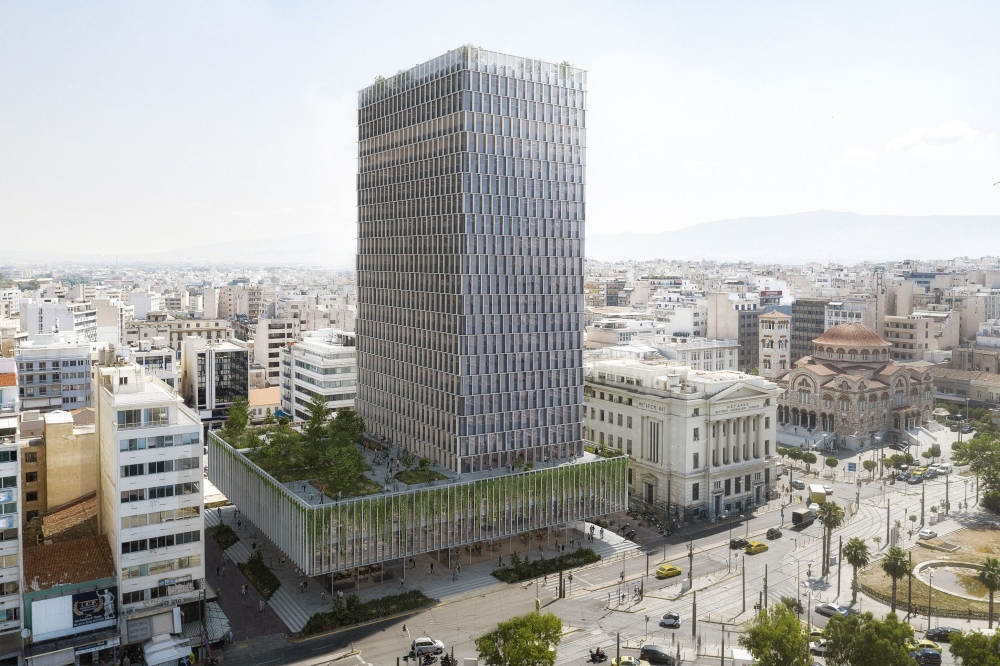 The new design for the Piraeus Tower ©PILA studio
The new design for the Piraeus Tower ©PILA studio
It has also been announced that the historic building of Piraeus’s Old Railway Station in the area of Agios Dionysios will also be restored and is planned to house the “Home of Rebetiko”. According to the Municipality of Piraeus, this cultural and exhibition centre will be primarily dedicated to rebetiko music, at a site that had been important for its evolution. Also, the space surrounding the station will be used for cultural events and concerts. The project will be realised as part of the broader regeneration plan for the area, which includes more green spaces and cycle and pedestrian routes.
Finally, the project for the remodeling of the coastal front of Mikrolimano –the marina close to Piraeus’s centre, dotted with restaurants and cafes– is in the final stages of completion. The construction project for Mikrolimano concerned the renovation of 15,600 m2, and it included the extension and renovation of its coastal waterfront promenade, with the creation of green spaces and public spaces, but also the reduction of water pollution.
Read also via Greek news Agenda: The “Antonis Tritsis” urban development programme to enhance regeneration of cities and regions; The Ellinikon Project in Southeastern Athens on the rails!; The pocket parks of Athens; Rebetiko music: From the margins to the mainstream
Based on an article originally published on Griechenland Aktuell (Intro image: View of Piraeus with the redesign for the Piraeus Tower ©PILA studio)

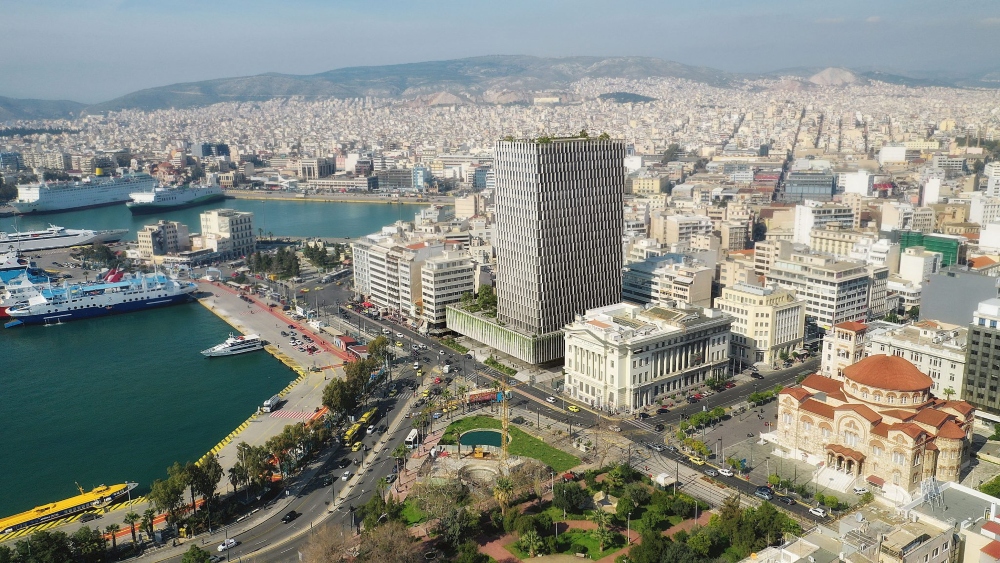



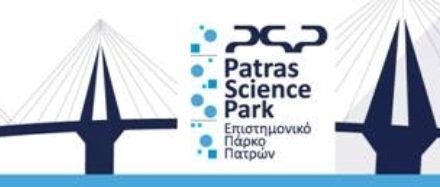
![Literary Magazine of the Month: [FRMK] and its Ten-Year Anniversary Issue ‘Tenderness-Care-Solidarity’](https://www.greeknewsagenda.gr/wp-content/uploads/sites/2/2024/04/frmkINTRO2-1-150x150.jpg)





